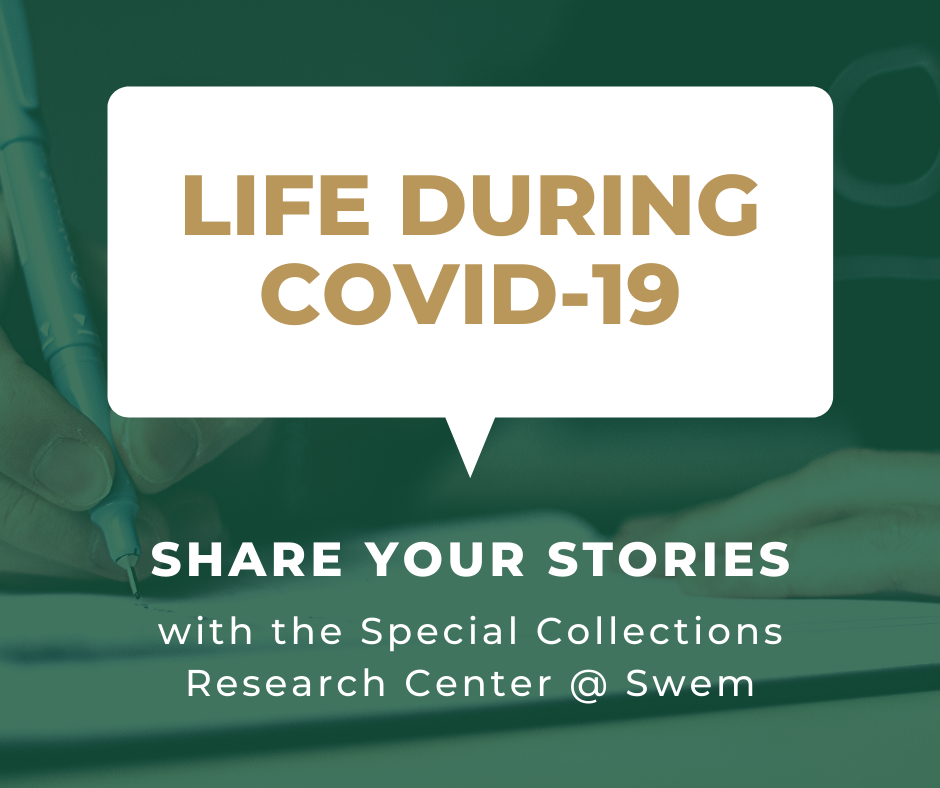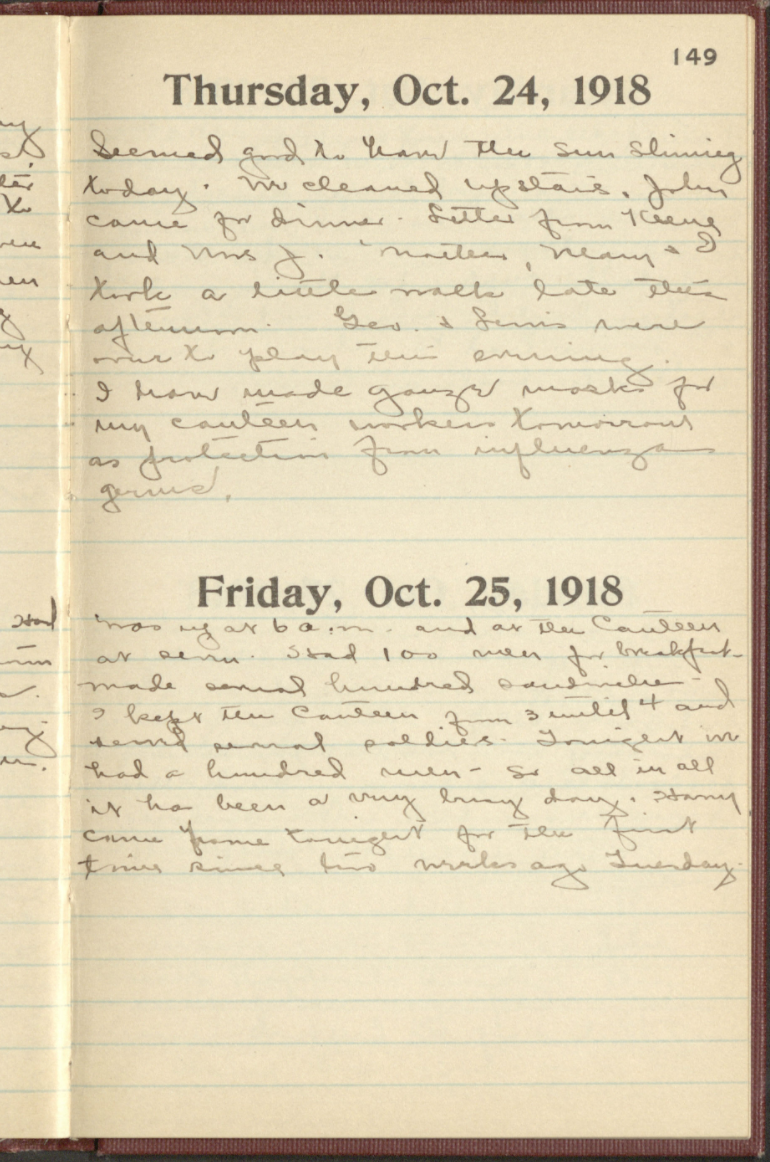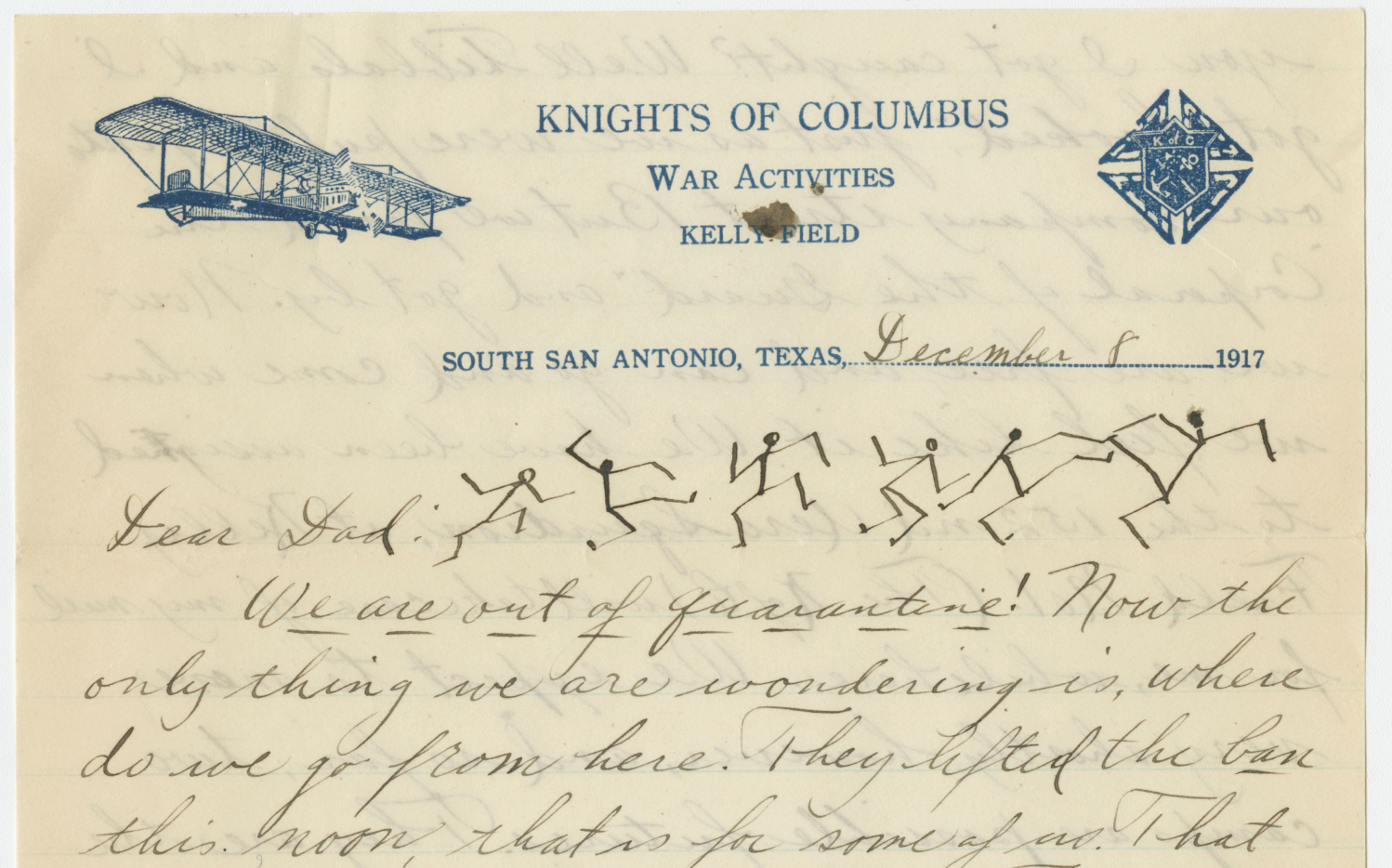Documenting Life During Pandemic
 By Jacob Hopkins - Mosaic Fellow
By Jacob Hopkins - Mosaic Fellow
The W&M Digital Archive is home to digitized narratives of life amidst pandemic. Learn more about these unique historical resources and share your own personal memories of life during COVID-19.
The COVID-19 pandemic has necessitated an unfamiliar routine. We are all living through the same global health crisis but within our own space, clearly delineated and separated from others. Our days continue with new rhythms: video conferences with classmates and coworkers; caring for family and checking up on friends; more time spent in the kitchen and in front of the computer. As we pass one month in quarantine, what differentiates the days from one another are the marks we leave behind: the memories we record, the connections we cultivate, the resiliency and compassion we nurture and share with others.
A recent New York Times article shared personal letters and diaries written during the Spanish Influenza pandemic of 1918, and asked, “What will historians see when they look back on the COVID-19 pandemic of 2020?” As archivists, we approach this new territory as opportunity for involvement and innovation—a chance to collect and uplift individual voices that contribute to a shared living history. Read on to learn more about historical resources in Special Collections that document the history of disease and pandemic, and discover how to share your own personal memories of life during COVID-19.

as protection from influenza germs."
The Pearl Johntz Diary (SC 00458) tracks the intersections of two major global events: World War I and the 1918 Spanish flu pandemic, caused by the H1N1 influenza virus. While news reports of King Alfonso XIII of Spain contracting the flu gave the pandemic its name, the virus infected soldiers and civilians worldwide and its point of origin is still debated. Pearl Johntz, a wife and mother in Parsons, Kansas, was a Red Cross canteen captain who fed soldiers that passed through Kansas. Her diary reflects a time of change and transition, both as she takes on new responsibilities to support the war effort and as the world around her shelters in place to limit the spread of the Spanish flu.
Johntz’s diary, written over 100 years ago, describes social distancing as a protocol employed long before the phrase entered our lexicon. On October 9, 1918, she writes, “All the schools, theaters, churches and public gathering places have been closed on account of Spanish influenza.” Her husband, a civil engineer, self-quarantines after working away from home: “We had the whole family for supper except Harry. He is still staying at the hotel. Afraid of bringing the ‘flu’ home to us. We miss him. Seems strange to have him staying in town & just phoning in.” Just as we adapt to talking with family and loved ones over video calls and through social media, so did those who lived during the Spanish flu pandemic find new ways to communicate and maintain connections.
In between shifts at the canteen, Pearl Johntz uses her time in quarantine to knit sweaters for the Red Cross and raise money for Liberty Bonds. With normal daily life abridged by both war and disease, Johntz finds comfort and clarity in helping others. On October 24, she signs off, “I have made gauze masks for my canteen workers tomorrow as protection from influenza germs.” This offering evokes the support many have shown healthcare workers and essential personnel during the time of COVID-19.
Pearl Johntz and her family safely lived through the 1918 pandemic, but her diary is but one narrative from a larger history. As we all adjust to the new realities imposed by COVID-19, William & Mary Libraries invite all members of the William & Mary and greater Williamsburg community to add their voices to our collections. We welcome submissions of all forms of personal reflections to add to the physical and digital archives. Your memories matter, and your experiences are an important part of our shared history.

Your experience is uniquely yours and how you record it is up to you! Capture your memories in whatever way you choose, and share and reflect on any part of your experience. As part of the records preserved in the Special Collections Research Center, your materials will be an accessible part of the historic record and contribute to research for years to come. Visit our Documenting life during COVID-19 page to learn more and make a submission.
The COVID-19 pandemic has altered our world in the short-term—and in the long-term in ways we cannot yet predict. A letter dated December 8, 1917 from E.R. McElligott, a draftsman in the U.S. Army stationed in San Antonio, begins, “We are out of quarantine! Now the only thing we’re wondering is, where do we go from here.” While we cannot fully predict the future, we can document our present. Recording our experiences is catharsis for now and a map for later.
Share your stories of life during COVID-19 with Special Collections.
Resources and More to Explore:
- Get inspiration for documenting your life during the COVID-19 pandemic from A Journal of the Plague Year, a curatorial consortium of archivists, museum professionals, and researchers archiving COVID-19.
- Read the fully digitized Pearl Johntz Diary, 1918 (SC 00458) on the W&M Digital Archive. Review a transcription of the diary on W&M Libraries Transcription site. Please note transcription is still under review.
- Explore over 100 digitized letters from the E.R. McElligott Papers, 1917-1919 (MS 00126) on the W&M Digital Archive.
- Find the Pearl Johntz Diary (SC 00458) and E.R. McElligott Papers (MS 00126) on the SCRC’s Manuscripts and Archives Collection Guides database.

